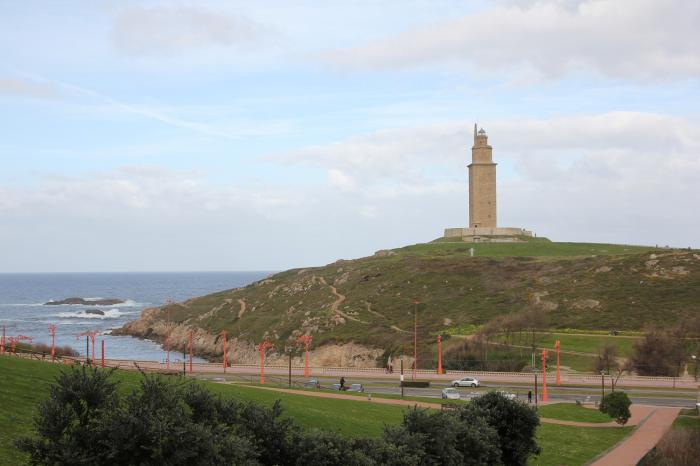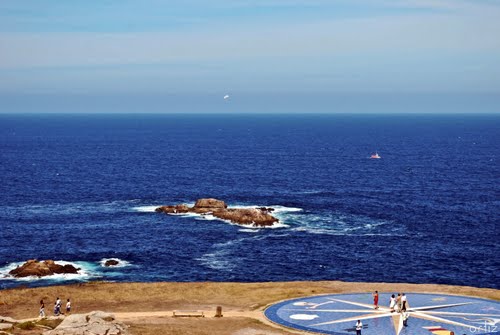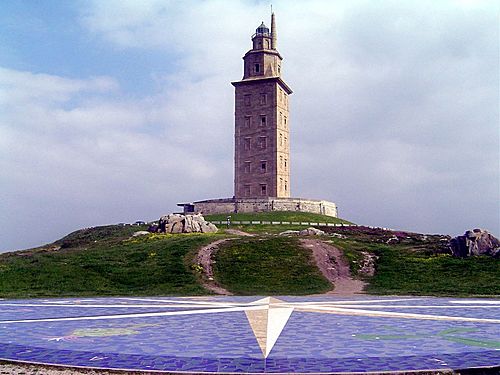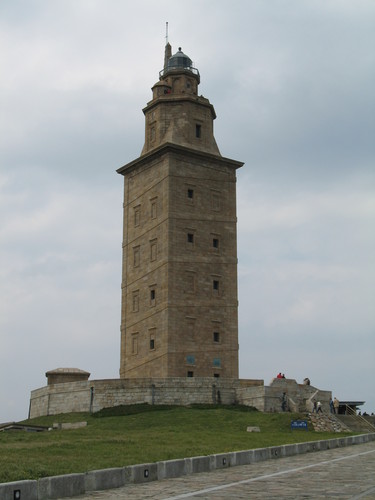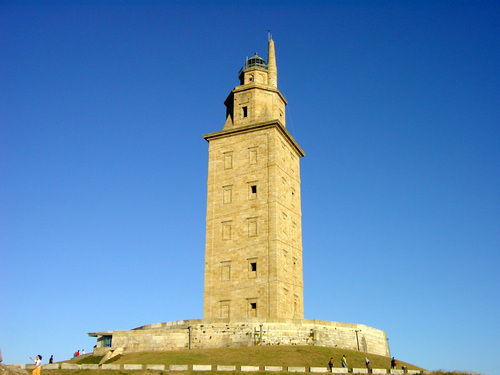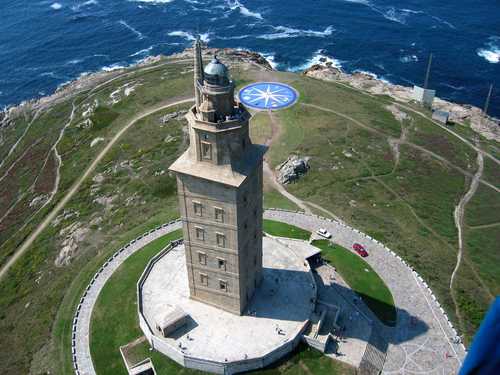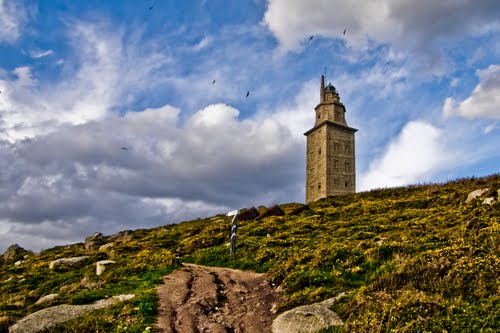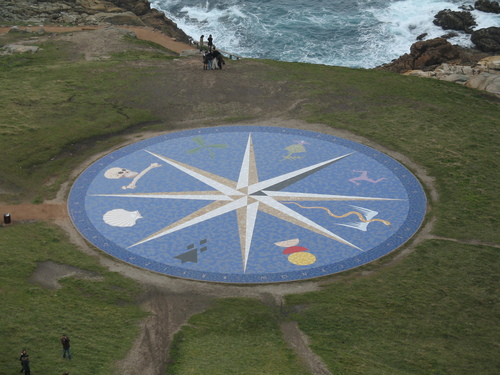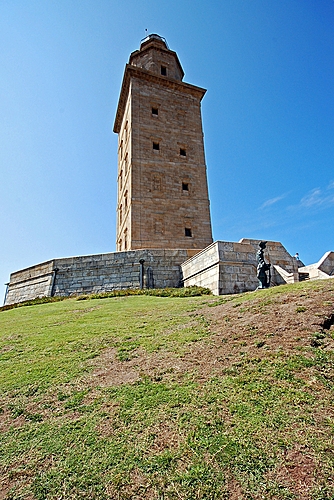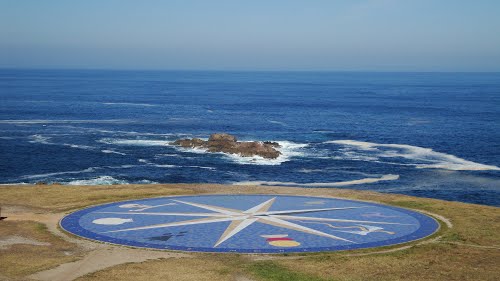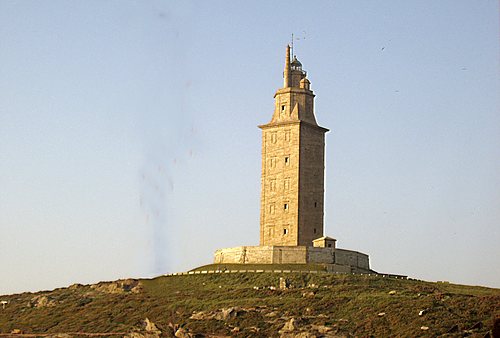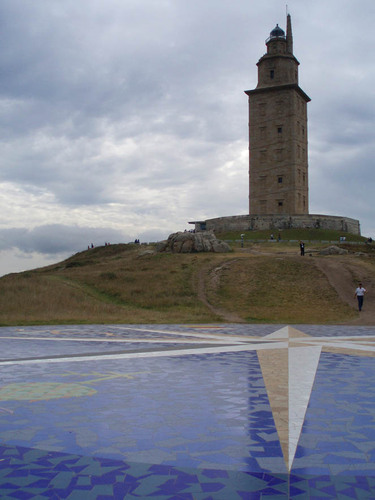The Tower of Hercules is an ancient Roman lighthouse on a peninsula about 2.4 km from the centre of A Coruna, Galicia, in north-western Spain. Until the 20th century, the tower itself was known as the "Farum Brigantium". The Latin word farum is derived from the Greek pharos for the Lighthouse of Alexandria. The structure is 55 m tall and overlooks the North Atlantic coast of Spain. The structure, almost 1900 years old and renovated in 1791, is the oldest Roman lighthouse in use today. There is a sculpture garden featuring works by Pablo Serrano and Francisco Leiro.
The Tower of Hercules is a National Monument of Spain, and since June 27, 2009, has been a UNESCO World Heritage Site. It is the second tallest lighthouse in Spain, after the Faro de Chipiona.
Construction and history
The tower is known to have existed by the 2nd century, built or perhaps rebuilt under Trajan, possibly on foundations following a design that was Phoenician in origin. It is thought to be modeled after the Lighthouse of Alexandria. At its base is preserved the cornerstone with the inscription MARTI AUG.SACR C.SEVIVS LUPUS ARCHTECTUS AEMINIENSIS LVSITANVS.EX.VO, permitting the original lighthouse tower to be ascribed to the architect Gaius Sevius Lupus, from Aeminium (present-day Coimbra, Portugal) in the former province of Lusitania, as an offering dedicated to Mars. The tower has been in constant use since the 2nd century and is considered to be the oldest existing lighthouse in the world.
In 1788, the original 34 m, 3-story tower was given a neoclassical restoration, including a new 21 m fourth storey. The restoration was undertaken by naval engineer Eustaquio Giannini during the reign of Charles III of Spain, and was finished in 1791. Within, the much-repaired Roman and medieval masonry may be inspected.
The Romans who conquered this region of Spain believed it to be, in a figurative sense, the end of the earth, whence its name Finisterra. This region is notorious for shipwrecks, earning it the name Costa da Morte, "Coast of Death".

